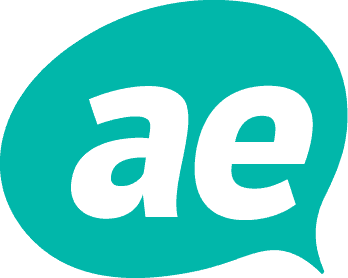This blog was updated on 3/21/2024
Are you thinking about your automotive social media marketing efforts?
In 2021, nearly 63% of the entire world’s population actively used social media for almost 2.5 hours a day. This statistic is simply staggering, and there is something pretty invaluable for those in the automotive industry to infer from this:
Those people drive cars.
That's right. A not-so-insignificant amount of those social media users are potential car buyers, so it's imperative that your car dealership thinks about automotive social media marketing strategies to capture those potential customers on the social media channels where they spend a good chunk of their time.
If those insane stats don’t sound the alarms to review your dealership’s social media strategy and rethink your approach to customer engagement, I’m not sure what will!
11 Social Media Strategies for Automotive Industry Professionals to Consider
With such strong online communities, throwing some brain power (and marketing dollars) toward social channels like Facebook, Twitter, and Instagram should be a given for car dealerships and automotive industry folks. But if you’re still not convinced, this list of strategies can help give you better insights about using social media at your dealership.
Social media marketing doesn’t have to be intimidating!
Hopefully, the following tips will inspire you to tap into the incredibly lucrative resources that social media platforms can provide for the auto industry in one way or another. After all, the opportunities for your car dealership to shine online are plentiful; it’s up to you to figure out which ones connect you best to your car buyers!

#1: Target Consumers on Facebook
It’s no secret:
We’re all on Facebook, scrolling through feeds, posts, and comments daily. Some use it more than others, of course, but generally, we’re all part of the same massive Facebook audience. As a result, Facebook has become a behavioral powerhouse. It's not an understatement to say that Facebook is one of the most titanic social media sites, and the automotive industry can stand to gain a lot from utilizing it.
They understand the interests and habits of nearly every demographic on the planet, and this data enables them to keep consumers online on their social accounts for longer periods of time by presenting more specific content. That’s the part where your car dealership can take advantage: the fact that car buyers research primarily online.
When you put out a Facebook ad, for example, you select the demographics you want to market to, and Facebook does the rest. Once that ad is published, Facebook automatically presents it to the most relevant consumer base. These are people who best fit the description of your target demographic based on their past behaviors, and the hope is that this will draw potential customers to your Facebook page.
Factors like location, search keywords, comments, likes, posts, and even liked brands all come into play to determine if someone is more or less likely to be an in-market shopper for your dealership. There is great potential here to generate leads!
The best part for dealerships is that whenever Facebook adds another feature to their platform (newsfeed, watch, Marketplace, groups, etc), it creates another opportunity for dealers to get in front of potential customers and their target audience in meaningful ways using social media.
The moral of the story:
Facebook and its customer research are world-class, and utilizing your Facebook page through advertising or engaging with shoppers directly is an effective way to boost your quality leads. Because of its incredible reach, Facebook is an important part of every dealer’s automotive digital marketing strategy.
#2: Do Not Discard TikTok
The power of vertical video content can NOT be denied in today's social media climate.
TikTok has changed the content creation game, and it's viral potential is incredible. Entire generations of new car buyers are engaging on the platform, so it's imperative to do your due diligence in utilizing TikTok in your automotive social media marketing strategy.
If you want to read more on on this particular strategy, we recommend you read our blog, 'Why Your Car Dealership Should Use TikTok.'
#3: Use Twitter to Drive Sales Conversions
Twitter is another popular social media platform among car buyers. While it doesn’t have the firepower of its rival Facebook, there’s something special about the simplicity of tweets that keeps users coming back for more.
In its early days, Twitter was all text. Still, since then, it has branched out to include higher-engagement media content like images, video, and audio.
Dealers, and many other automotive industry brands, can take advantage of Twitter in a similar way to other social media platforms, but with a distinct focus on short snippets of content. Regularly share or post concise, striking comments and maybe link to a video or longer format to increase your organic traffic and followers.
The frequency of your posts is also important. Consumers don’t want to see you posting ten things a day, for example, but they also want to see more than one post per month. Finding that happy cadence with your Twitter audience will involve some trial and error but will help you in the long run.
Twitter also offers a complete business-oriented suite of services, including advertising, campaign management, targeting, and analytics.
With Twitter business you can promote tweets, videos, or even just your account in general, all to increase brand awareness. The power of social media!
#4: Market to Millennials on Instagram
Brace yourself!
Millennials have officially become the largest auto buyer group in the U.S. Unsurprisingly, Millennials are continually choosing to devote their attention to Instagram.
That’s right! In our hyper-visual social media society, Instagram reigns supreme with bright saturated food pics, viral dance clips, and soon your vehicle inventory.

Instagram is an engagement and reach gold mine for your dealership. Showcasing a car through boosted advertising on Instagram gives your dealership’s social media efforts a chance to expand into a larger community of in-market shoppers.
Some of these customers may also be first-time buyers rather than recent buyers, so you may need to adjust your strategy around posts. Also, consider including imagery that supports your brand as well.
This new social media community is interested in learning more about your dealership in addition to your inventory. This helps break the ice and motivates consumers to take action toward the test drive.
#5: Strategic Video Marketing with YouTube
If you’ve ever watched a video online, chances are the video was on YouTube. Owned by Google, YouTube’s online influence is bananas.
It’s no secret that the top YouTube influencers make quite a respectable income as well, making the majority of their income from ad revenue on the ever-popular platform.
Regardless of industry, YouTube’s video platform is a highly effective channel for advertising. This is because users there are highly engaged, and the ad placement has been tested and refined.
When you advertise on YouTube, your placement is displayed on content in a variety of ways. Some are video-based, while others are simple text-based pop-ins.
You get to decide who will see your ads on YouTube by creating buyer personas. These selections of demographics and interests influence the effectiveness of your ad campaigns, but also allow you to tweak your ad strategy as you go so that you’re always targeting the right audience.
#6: Add Pinterest to Your Social Media Strategy
Initially popularized by home decor and recipes, Pinterest has since exploded as a contender for virtually any interest and is a unique social media platform in it's own right. You might not think this is the most helpful medium for an automotive dealership to use, but it can be another way to increase your SEO presence.
Underutilized by advertisers, Pinterest could be a great platform to gain exposure from and add to your automotive social media marketing strategy.
The growing platform is regularly increasing in popularity. Using ‘promoted pin’ advertisements could also prove to be a great value - especially if the competition is not using the platform. This is a chance for you to extend your visibility by thinking outside of the box when it comes to consumer interests.
#7: Story Telling through Social Media Platforms
Not everything shared or promoted online should have a direct sales focus to it. Creating content that customers can relate to or enjoy consuming goes a long way in capturing their business.
After all, on the other end of your ad, there’s a human being with their own set of beliefs and interests.

Car shoppers aren't just car shoppers; so you have to hone in on their lifestyle and values to really get to the heart of why they need a vehicle. Try to develop relationships with your car buyers that can lead to repeat sales and referrals!
Being relatable and sharing fun content through social channels can be a more effective strategy than only posting inventory or car-specific content. It shows your buyers that you understand them and integrate more deeply into their lifestyles than they previously may have thought.
Meaningful connections should be a large part of a social strategy and gaining new customers and attempting to bond with prospective customers.
#8: Offer Social-Specific Contests and Promotions
Have a promotion or special event coming up? Here’s an idea: add a specific social media element to it. Perhaps incentivize ‘liking’ or sharing an event post by entering these users into a special prize raffle!
This is a great way to increase your user base AND organically boost your content’s online reach. Everyone loves the prospect of winning something (even something small as a free cup of coffee), and getting users to engage with your content is a win-win for everyone involved.
#9: Remember that Social Media is a Two-Way Conversation
Okay, so you’ve got a promotional ad running on Facebook. It’s getting a bunch of likes, maybe a couple of shares, but it’s also receiving something entirely unexpected: comments. Unlike other advertising, social media advertising may require some added back-and-forth engagement with users.
If it’s not a direct one-on-one conversation through Messenger or another messaging app, that means the conversation is directly visible to others. Your engagement here should be considerate of that as well.
Digital presence isn't just being there, it's taking action, telling stories, and sending out social signals to breathe life into your business.
It's becoming increasingly important to humanize car dealerships, so being an active participant in your efforts can make all the difference between you and the car dealerships that litter your local community.
#10: Social Reviews Matter
A company’s reputation is one of the most important things to keep in good standing - especially as more engagements are publicly accessible online. One way dealers can affect this is by managing their social media accounts.
It’s not inherently obvious, but dealership social media business profiles say a lot about the kind of quality service one can expect. How would you feel about a business if you saw its comments were short and sometimes misspelled or grammatically incorrect? If they minimized customer concerns?
Remember, potential customers read reviews, and heed them.
While it’s not a direct indicator of quality issues at the dealership, these minor issues don’t bode well for potential customers who are considering doing business with you. Even if you have some comments that aren't an accurate reflection of your business, customer perception at a glance is powerful, and car buyers are already a skeptical bunch.
#11: Be 100% Committed to your Social Media Marketing Plan
Frequently, making progress doesn’t happen instantaneously. In building a social media presence, plan for the long haul as it’s a marathon, not a sprint. Far too often, dealerships are looking for a quick fix to get more sales before month’s end, and that’s unfortunately not how social media marketing works.
The money and effort put behind social media marketing through car advertising and brand awareness builds like a snowball rolling down a hill. At first, things may take a while and not show much growth at all, but over time as it builds on itself, progress gets bigger and faster, and you start seeing significant results.
This is why you should be 100% committed to your social media marketing plan. Changing up where and how you advertise is a naturally evolving part of that process, but the biggest challenge is staying vigilant and consistently prioritizing your social media presence.







